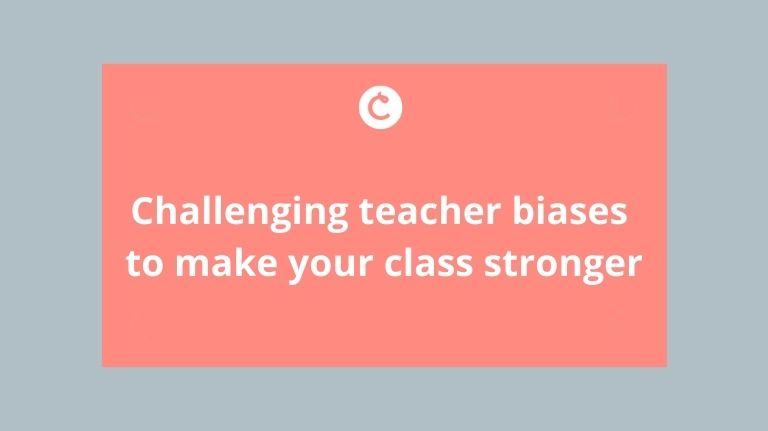Challenging teacher biases to make your class stronger
As human beings, we naturally form biases in order to organize our experiences more efficiently in our effort to understand and engage with the world around us. In the classroom, these teacher biases lead to expectations of students that are sometimes unfair and unproductive. In a study from Columbia University, Kyunghee Lee affirms that,
Many investigators examining teachers’ behavior towards students have consistently found differences in their treatment…Low achievement students, for example, usually receive considerably less opportunity to respond in class than high achievement students
(Lee, 1996).

Since biases are ingrained, it’s not as simple as changing your thinking. However, you can change your behavior in an active effort to give every student the chance they deserve to learn and engage in your classroom. We know you’re dedicated to giving your students the best education possible, so here are a few ideas to challenge your in-class biases.
1. Make yourself aware of your biases — Teacher biases emerge from many sources. Maybe someone made a crude comment at the beginning of the school year and you’ve felt disdain towards them ever since. Or perhaps you have an introverted student that you think never knows the answer since they don’t speak in class. (This is a helpful article by Stephen Lockyer to learn about different types of teacher biases.) Whatever your hidden biases may be, write them down for each of your students. Then, the next time someone shouts out in the classroom, you can think about your bias and try to correct the behavior by positively reinforcing a discussion of the lesson’s topic. Instead of telling the student to be quiet, try asking them what they think about the subject you’re teaching.
2. Assess your assumptions of parents — Many natural biases come from expectations of students based on their parents. We unconsciously categorize students based on their parents’ socioeconomic level, their career, their use of language, or even the clothes they wear. Try to keep in mind that your students can’t help where they came from and that doesn’t necessarily depict what type of student they are. Here is a really interesting case study by AFT on breaking teacher biases with parent/teacher home visits!
3. Maintain classroom expectations for group success — Setting standards for the class and upholding them for every student is also a great behavioral change to challenge your biases and give every student the opportunity to succeed in your class. If you expect one student to know the material, it’s only fair to the progress of the class that every student in your class be expected to know the same material. A great way to implement this practice into your classroom is with Classtime‘s hidden name function. This gives your students anonymity, allowing those introverted students to have a voice, and tests your assumptions of who knows the material and who doesn’t. You might be surprised at the results!
Try it: Create a question set on your dashboard, hide the students’ names and then sort the answers by performance. Once all the answer are in, you can show the names and test your assumptions to see who understands the material and who needs a bit more instruction.

Challenging your biases is an ongoing process of reflection and experimenting with different methods to see how you can give every student the voice they deserve. Above are just a few things that might help you be aware. If you have other suggestions for challenging your expectations, share them in the comments below!
Classtime can help you get started with challenging teacher biases in your classroom today:

